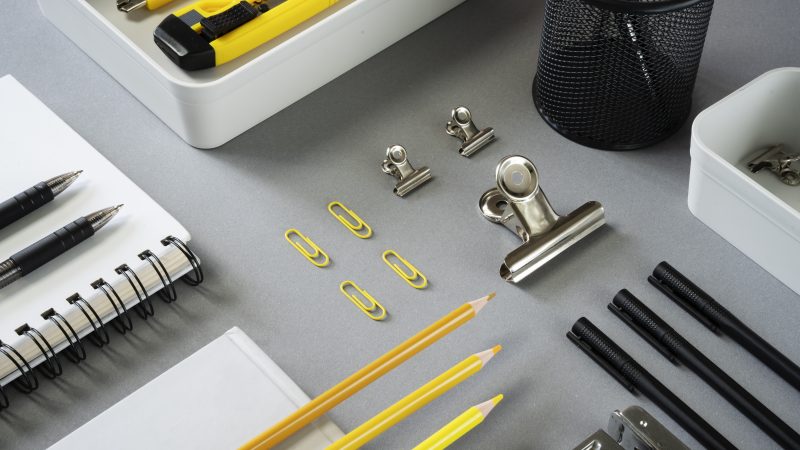How to Use Compact and Repair in Access 2007 to Fix Database Issues?

Microsoft Access is an essential tool used by businesses to create databases for storing vital information systematically. With time, an Access database file tends to grow in size due to the addition of new data in it or becomes bloated because of unused space created after deleting unwanted tables or entries from it.
The increase in database file size causes two things:
- It makes an Access database file prone to corruption.
- It impacts the performance of the database file by making it slow.
Performance issues can result in delayed business operations, thus lowering the efficiency of a process. Database corruption can stall workflows by making mission-critical data inaccessible to users. In severe scenarios, database corruption could also lead to data loss.
Therefore, to avoid problems, it becomes necessary to do routine maintenance of Access database files. For this, users can use MS Access’s built-in Compact and Repair utility.
Let’s read further to learn more about Compact and Repair in Access 2007.
What is Compact and Repair?
Access Compact and Repair is an essential feature and a built-in utility in MS Access 2007. It lets users reduce the size of a large database file and repair inconsistencies causing errors or database corruption.
Its core functions are:
Compact: This function lets users reduce the size of a large database file on the disk by eliminating unused or redundant spaces that were previously occupied by database objects. It also improves the performance of the database file.
Repair: This function helps users fix inconsistencies with a database file, minor errors, or glitches that prevent an Access database file from working optimally or, worse, result in database file corruption.
Why Does an Access Database File Become Damaged/Corrupted?
There are several reasons behind a damaged or corrupted Access database file:
- Improper termination of/crashing MS Access
- Abrupt system shutdown due to power outage, system crash, etc.
- Bad sectors in the storage drive
- Network interruption while making changes in a shared database file
- Multiple users simultaneously editing a shared database file
- Conflicting JET Engine services
How to Use Compact and Repair in Access 2007?
A simple way to repair a problematic, damaged, or corrupted Access 2007 database file is to use Compact and Repair. Follow the steps below to learn to use this utility to fix a corrupted Access 2007 database file in different scenarios:
Scenario 1: If the Database File is Opening
- While the database file is open, click on the Microsoft Office logo button in the top left corner.
- Go to Manage > Compact and Repair.
MS Access will eliminate any unused spaces, fix errors and performance issues with the database file.
Scenario 2: If the Database File is Not Opening
- Launch MS Access 2007.
- Click on Blank Database to create a new database file.
- Once it opens, click on Microsoft Office Logo and click on Close Database.
- Again, click on the Microsoft Office Logo > Manage > Compact and Repair Database.
- You will see the Database to Compact From dialog box.
- Select the problematic database file and click on Compact.
- After it successfully fixes the database file, choose a path to save the database file.
How to Perform Access Database Recovery Using a Third-Party Software?
Minor errors and performance issues can be resolved using the compact and repair utility in MS Access 2007. However, there are chances of missing data from the database file. The compact and repair may also fail to fix the damaged database file if the database is severely corrupted.
In such a scenario, you can use a powerful Access database repair tool like Stellar Repair for Access. It is a DIY access database repair tool that lets you repair corrupted or damaged ACCDB and MDB files. It can also help you perform Access database recovery to retrieve vital data from a severely corrupted database file and save it in a new Access database file.
The software can easily fix database errors and even repair database objects like tables, forms, etc. It is also capable of repairing split Access database files and recovering corrupt linked tables.
Whether your database file is inaccessible due to corruption, in an inconsistent state, or the Compact and Repair utility has failed, this specialized Access database repair can help you in varied scenarios.
Here is how to use Stellar Repair for Access to repair a corrupted/damaged Access database file:
- Download and install Stellar Repair for Access on your Windows PC.
- Launch it.
- You will see the Select Database
- Click on Browse and select the problematic Access 2007 database file.
- Select the database file and click on Open.
- Click on Repair.
- The software will repair and scan the file.
- Select an object in the left pane to preview it.
- Once you are satisfied, click on Save Database in the ribbon.
- Select the destination to save the repaired database file.
You have successfully repaired the corrupt/damaged Access 2007 database file.
Conclusion
Compact and Repair is a useful utility that helps you resolve errors or inconsistencies with a database file. It is a smart way to improve the performance of the database file by reducing the size of a database file without compressing the data. While it can easily resolve database issues, it fails to fix a severely corrupted Access database file.
For such a case, you can use Stellar Repair for Access – an advanced database repair tool for repairing severely corrupted ACCDB or MDB files. You can also use it to perform Access database recovery to retrieve data from a corrupt database file and save it as a new database file.
The steps mentioned in the post above show how to use Compact and Repair to ensure database reliability and optimal performance levels. However, you can automate this process by enabling the Compact on Close option in the Access Options window. Doing this will run Compact and Repair every time you close a database file.






